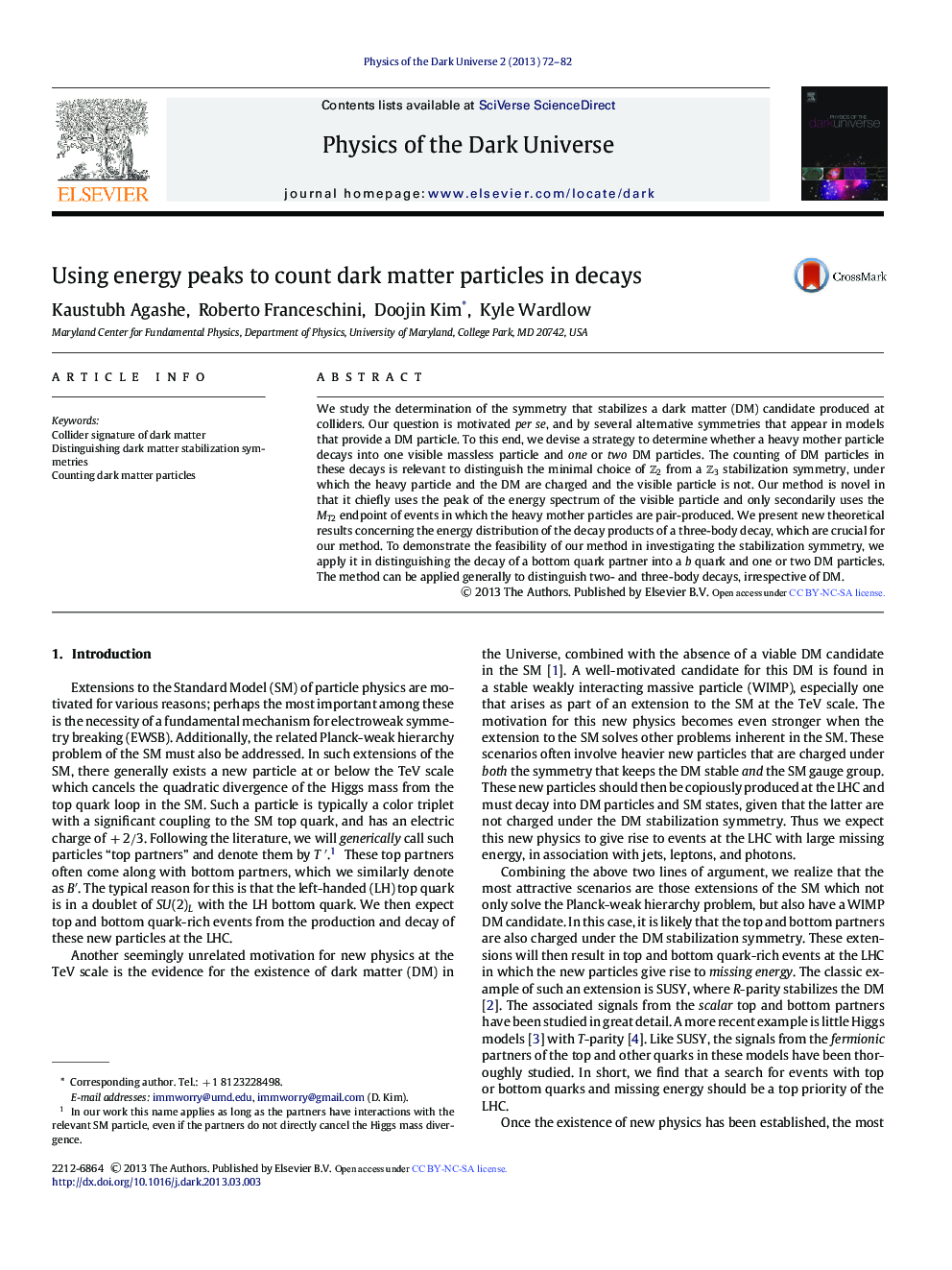| Article ID | Journal | Published Year | Pages | File Type |
|---|---|---|---|---|
| 1780767 | Physics of the Dark Universe | 2013 | 11 Pages |
We study the determination of the symmetry that stabilizes a dark matter (DM) candidate produced at colliders. Our question is motivated per se, and by several alternative symmetries that appear in models that provide a DM particle. To this end, we devise a strategy to determine whether a heavy mother particle decays into one visible massless particle and one or two DM particles. The counting of DM particles in these decays is relevant to distinguish the minimal choice of Z2Z2 from a Z3Z3 stabilization symmetry, under which the heavy particle and the DM are charged and the visible particle is not. Our method is novel in that it chiefly uses the peak of the energy spectrum of the visible particle and only secondarily uses the MT2 endpoint of events in which the heavy mother particles are pair-produced. We present new theoretical results concerning the energy distribution of the decay products of a three-body decay, which are crucial for our method. To demonstrate the feasibility of our method in investigating the stabilization symmetry, we apply it in distinguishing the decay of a bottom quark partner into a b quark and one or two DM particles. The method can be applied generally to distinguish two- and three-body decays, irrespective of DM.
